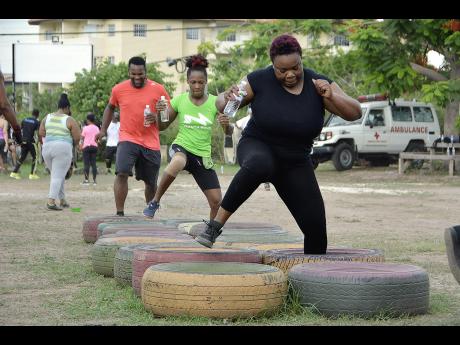Fit 4 Life | Building a fit foundation
By this time next week, millions would have started their two-week annual foray into the world of fitness. New Year's resolution fresh in their minds and no clear goal other than wanting to look like an Instagram model, most will abandon the quest at the first sign of soreness.
With no well-defined goals, no guidance, and no true understanding of what fitness is, it is not surprising that most people quit within a few weeks.
Now, with a few days before the start of New Year, it is the perfect time to break this cycle.
By asking two questions, you can start your 2019 fitness journey in the right lane:
1. What am I working towards?
2. Do I have the basic skills necessary to achieve this goal?
Asking these two questions should lead you to the components of fitness - the basic skills/attributes associated with fitness.
These include:
- cardiovascular endurance
- muscular endurance
- muscular strength
- flexibility
- power
- agility
- balance
- coordination
- speed
- body composition
- reaction time.
Body composition is the element that the average person centres their fitness goals around. To achieve these body composition goals, though, a strong foundation – built on other fitness components – is necessary. It is also important to look at how each component translates into daily life and affect overall health.
The key components for the average adult are:
CARDIOVASCULAR ENDURANCE
This is viewed by many fitness and health professionals as the most important component. Cardiovascular fitness refers to your body’s ability to supply oxygen to working muscles and other tissues as well as the muscles' ability to utilise oxygen for energy. Cardiovascular fitness primarily affects the heart, lungs, blood vessels. It has numerous benefits, chief of which is the improvement to heart health and protection from heart disease.
MUSCULAR ENDURANCE
Muscular endurance refers to your muscles endurance to contract continuously, or to hold a contraction against a load without fatigue. Every activity you do will require some level of muscular endurance but the extent to which you focus on endurance will depend on your goals and training techniques. Keep in mind, however, that muscle endurance is muscle group specific; that is, training for endurance in one group is unlikely to induce endurance in another.
MUSCULAR STRENGTH
Strength refers to how much force a muscle can generate in a single contraction. Strength training, when done correctly, improves performance and reduces injury risk. Strength training should not be confused with bodybuilding. Bodybuilding focuses on manipulating body composition while strength training is more specific to improving performance.
FLEXIBILITY
Flexibility is range of motion about a joint. More specifically, it refers to the mobility of the joints and how muscles, ligaments, tendons, or other soft tissues affect this mobility. Flexibility affects posture, performance, and injury risk.
Incorporate training for each of these areas at least twice a week and your body composition goals will be within reach.
- Marvin Gordon is a fitness coach; email: marvin.gordon@physiqueandfunction.com; yourhealth@gleanerjm.com

